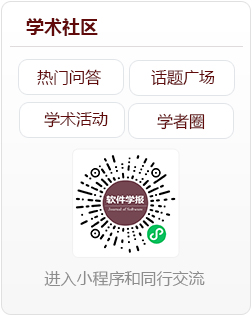Multi-threaded Code Generation Tool for Synchronous Language
Author:
Affiliation:
Clc Number:
TP311
Fund Project:
National Natural Science Foundation of China (61502231); National Key Research and Development Program of China (2016YFB1000802); National Defense Basic Scientific Research Project under Grant of China (JCKY2016203B011); Natural Science Foundation of Jiangsu Province, China (BK20150753); Fundamental Research Funds for the Central Universities (NP2017205); Joint Research Funds of National Natural Science Foundation of China and Civil Aviation Administration of China (U1533130); Foundation of Graduate Innovation Center in NUAA (kfjj20181603)
Get Citation
杨志斌,袁胜浩,谢健,周勇,陈哲,薛垒,Jean-Paul BODEVIX, Mamoun FILALI.一种同步语言多线程代码自动生成工具.软件学报,2019,30(7):1980-2002
CopyShare

Article Metrics
- Abstract:
- PDF:
- HTML:
- Cited by:
History
- Received:July 15,2018
- Revised:September 28,2018
- Adopted:
- Online: April 03,2019
- Published:
You are the firstVisitors
Copyright: Institute of Software, Chinese Academy of Sciences Beijing ICP No. 05046678-4
Address:4# South Fourth Street, Zhong Guan Cun, Beijing 100190,Postal Code:100190
Phone:010-62562563 Fax:010-62562533 Email:jos@iscas.ac.cn
Technical Support:Beijing Qinyun Technology Development Co., Ltd.
Copyright: Institute of Software, Chinese Academy of Sciences Beijing ICP No. 05046678-4
Address:4# South Fourth Street, Zhong Guan Cun, Beijing 100190,Postal Code:100190
Phone:010-62562563 Fax:010-62562533 Email:jos@iscas.ac.cn
Technical Support:Beijing Qinyun Technology Development Co., Ltd.



